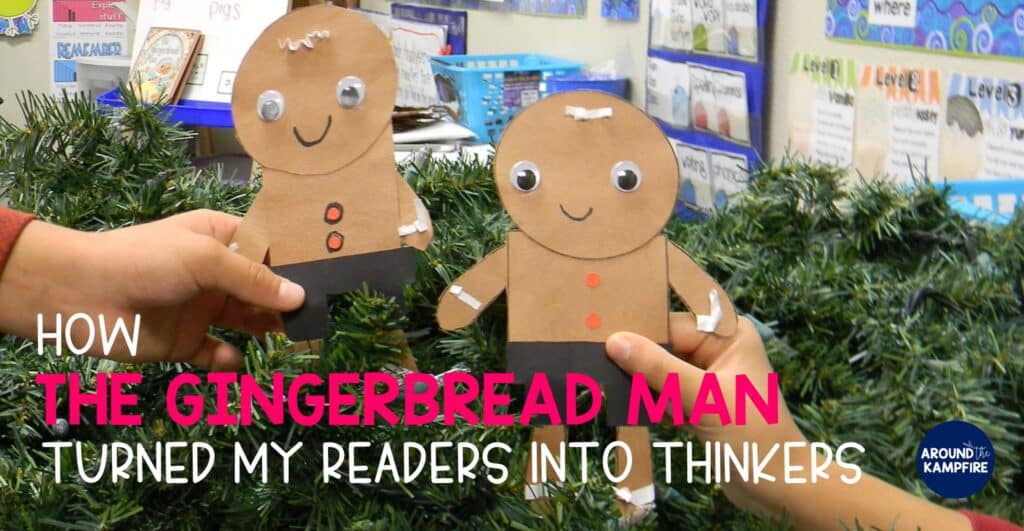
As primary teachers, a key focus of our reading instruction is on building comprehension. We want our young readers to not only use the strategies we’ve taught them but to think deeply about what they are reading. We want our students to read closely and to connect, to question and visualize, and to make inferences that give meaning to the words on the page. These skills don’t often come naturally, even to our most fluent readers. They require targeted teaching and support. I want to share with you some ways you can take your readers deeper into these well loved stories and how comparing versions of The Gingerbread Man can turn your readers into thinkers.
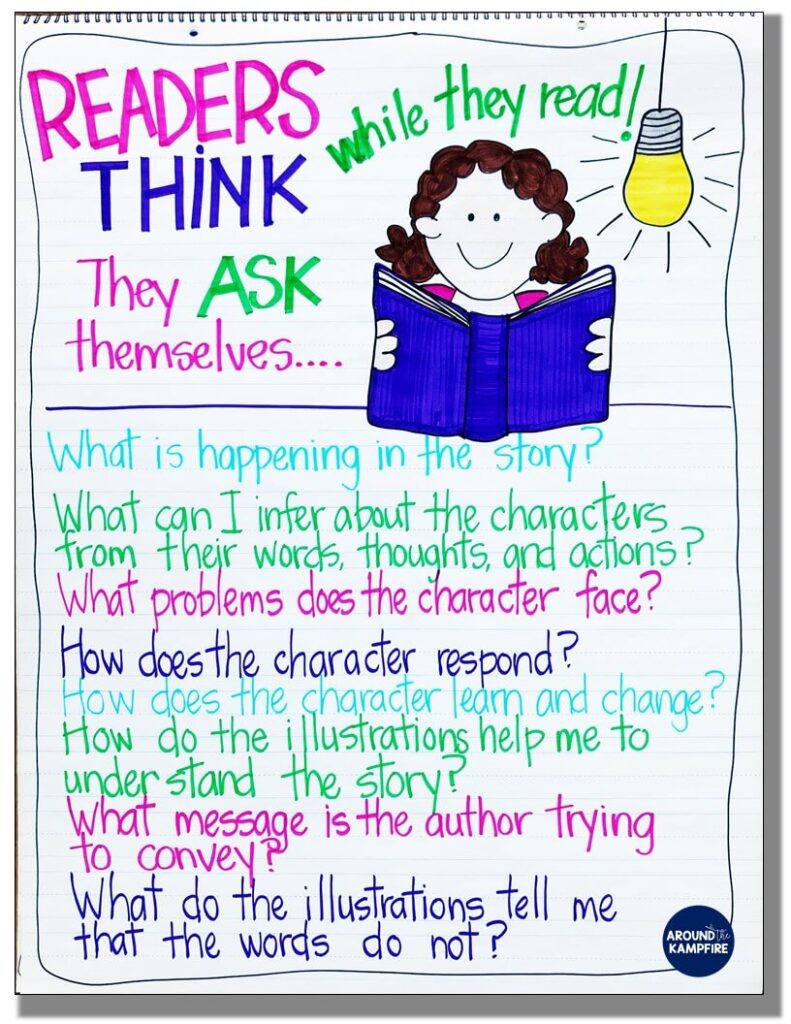
Comparing Versions of The Gingerbread Man
The Gingerbread Man, and all of its versions, lend themselves so well to addressing a multitude of reading standards for first, second, and even third grade. Let’s look at some of the ways you can use these books to determine the central message, analyze a character, identify non-literal language, and to understand why an author uses repetition in a story. I’ve listed all of the books I like to use at the end of this post and all are available as video read alouds on You Tube.

Determining the Central Message of The Gingerbread Man
Teaching students to identify the central message can sometimes be tricky. Often times, trying to hone in on the message or life lesson the author is trying to convey requires a leap in thinking for primary readers. I find that young children don’t yet have the life experience to draw on when trying to determine a moral in a fable or the life lesson of a fairy tale without a struggle. Nonetheless, the central messages in The Gingerbread Man are easily identified and ones that all children can relate to.
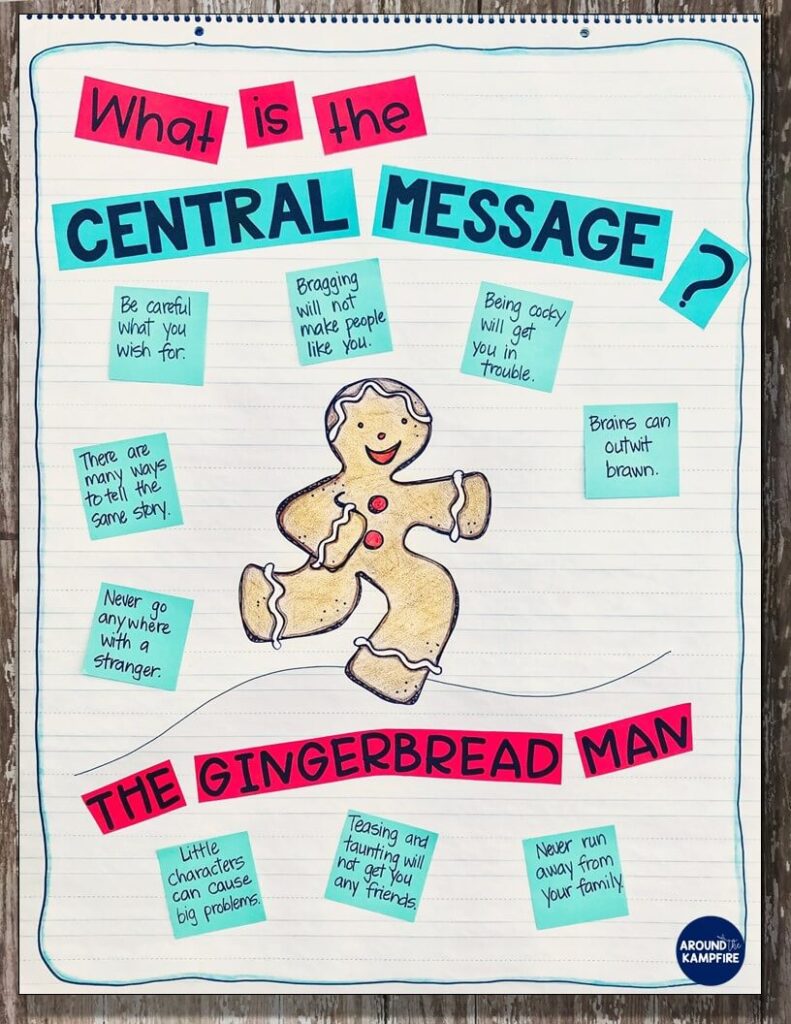
I approach teaching the central message by having students use character clues to decide what the author is trying to tell them through the character’s experience. What lessons does the author want the character to learn?
Examples of Central Messages in Gingerbread Man Stories
- Be careful what you wish for.
- Be careful who you trust
- Little characters can do big things
- Don’t automatically trust a stranger
- Never run away from your family and people who love you
- Bragging, teasing, and taunting will not make you friends
- Don’t believe everything you are told, especially by a stranger
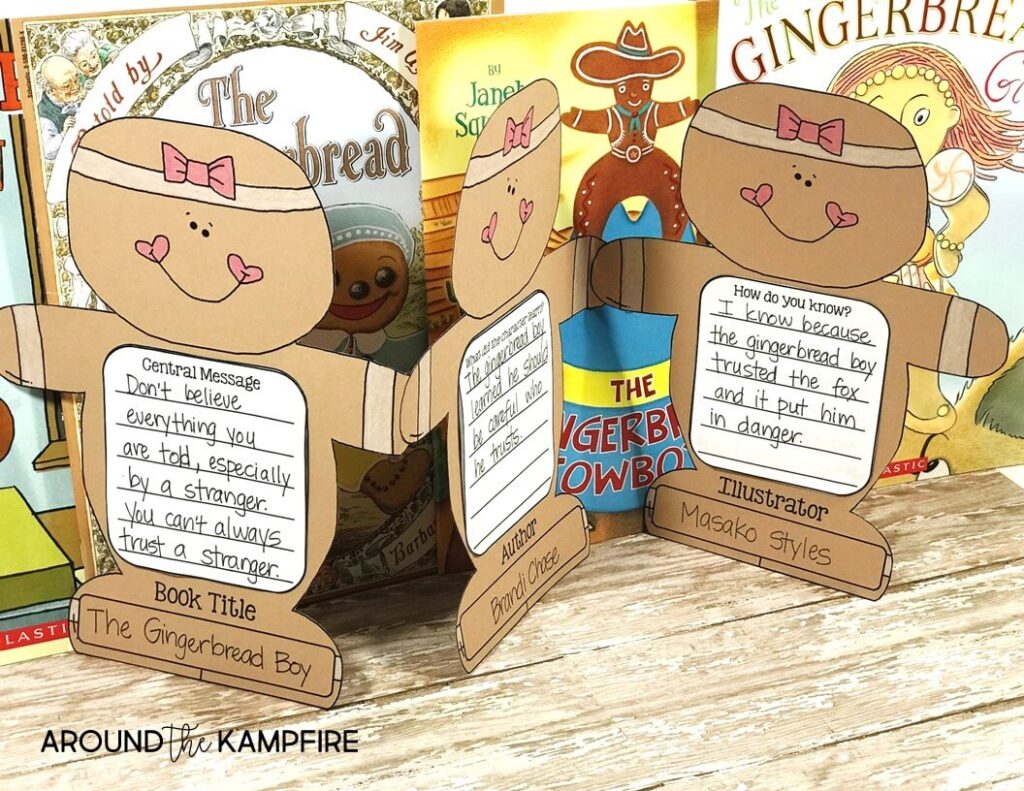
Take this a step further by having students not only decide what the central message is, but to explain how they know, and to think about the lesson the character can learn.
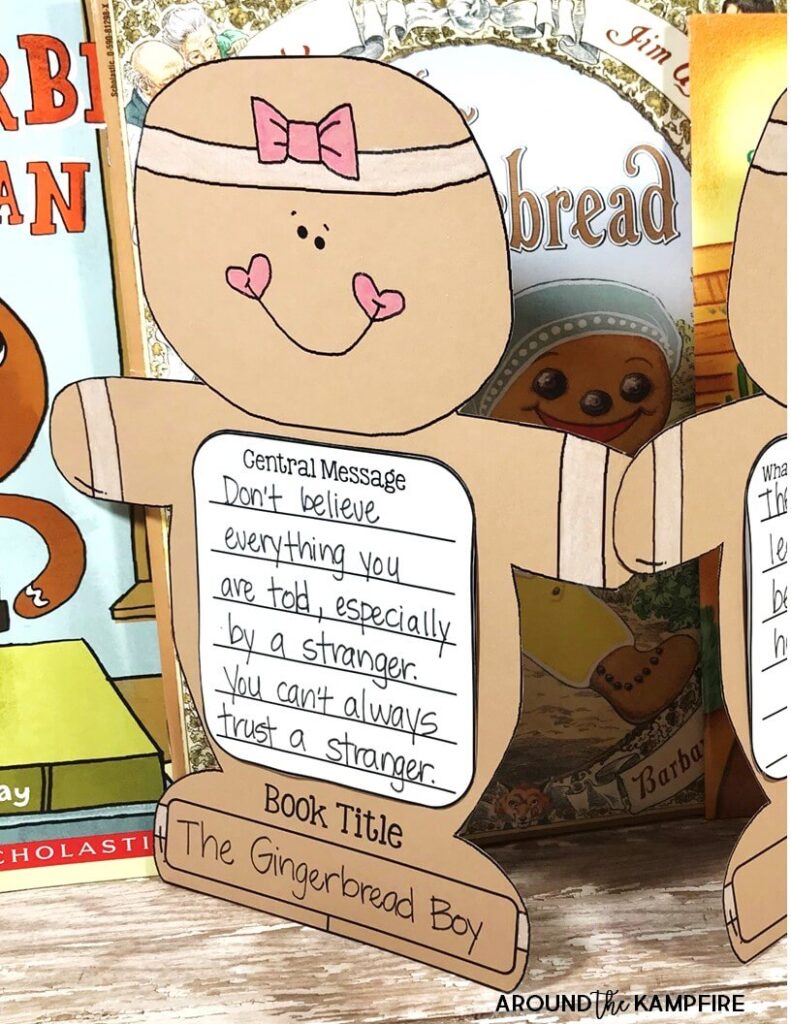

I added this digital version so students could write the central message of their favorite book using their tablets.
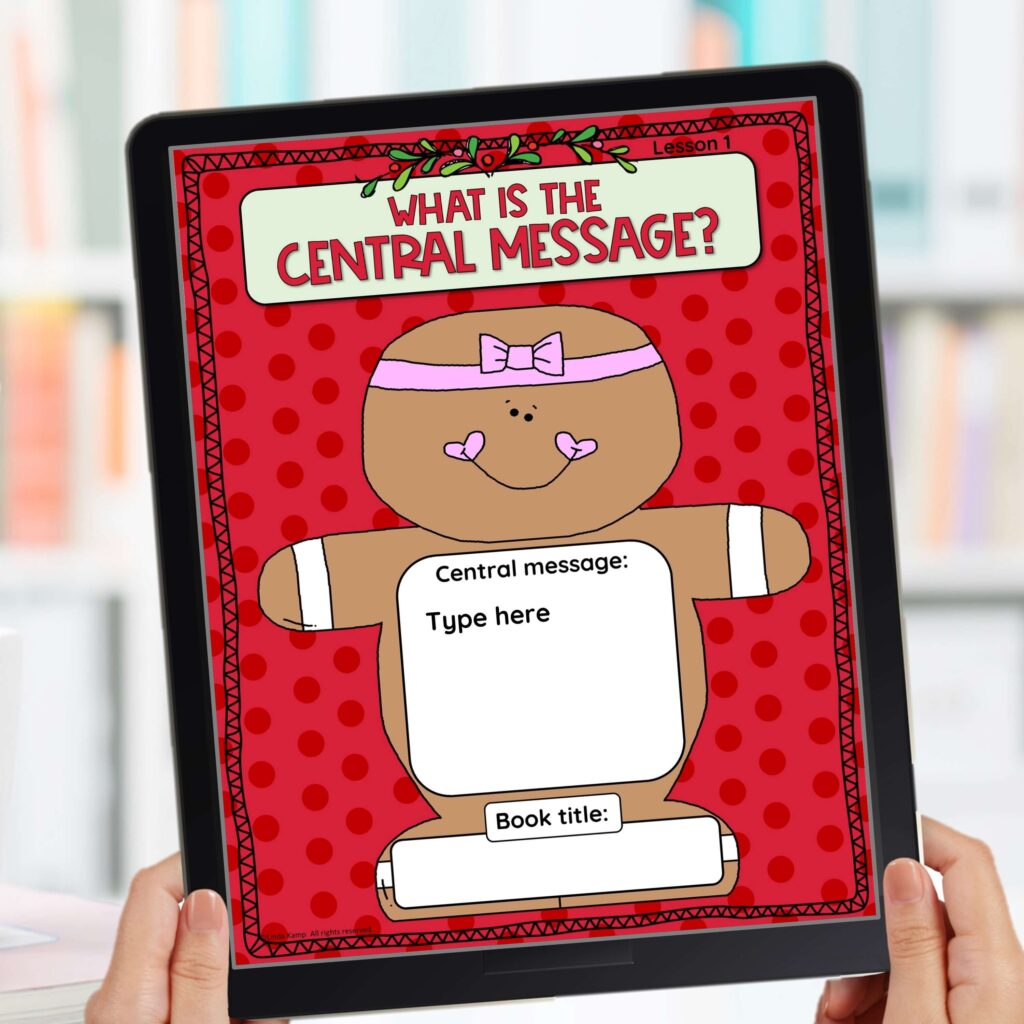
Comparing Story Elements
One of the things I love about comparing versions of The Gingerbread Man is the fact that there are many books available with a wide variety of cultural perspectives. The story elements in these books are quite different from one another. Comparing these makes for learning interesting new things about different cultures and creates insightful observations by students.
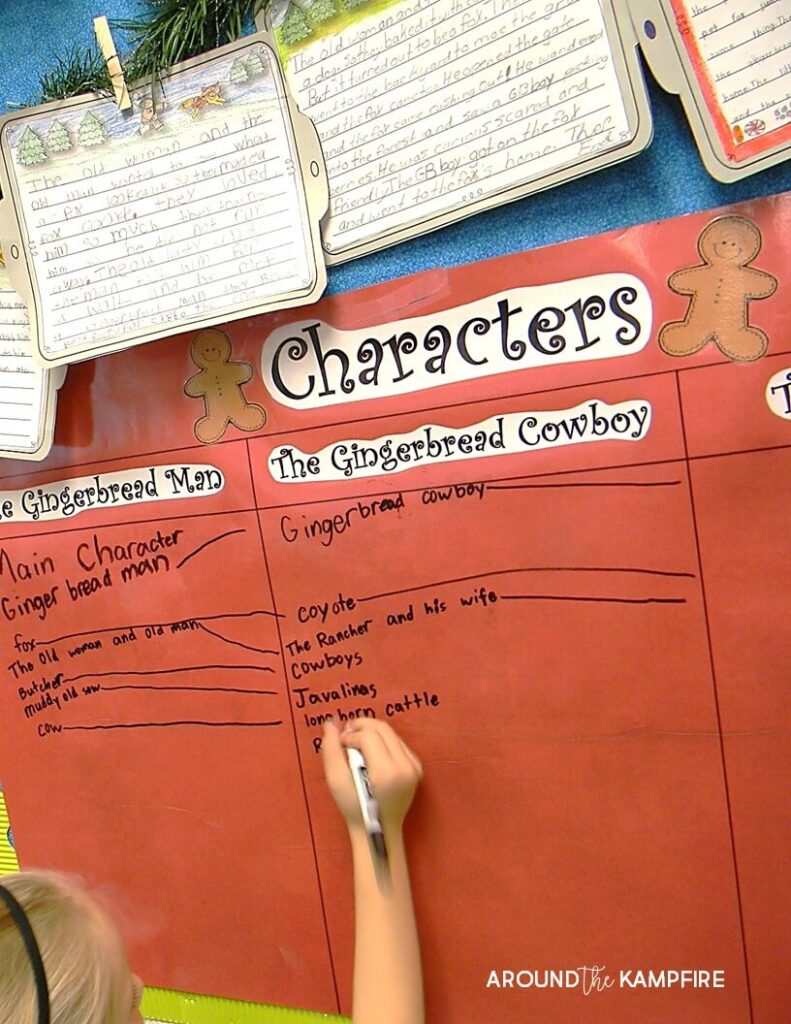
We use large class charts for students to write on and booklets for students to compare the story elements.

Click Here to get this free story elements booklet for your students. I project the colored versions for modeling and use the included blackline version and cover for the student booklets.
Using Illustrations To Understand A Story
By studying the illustrations, readers can add to what they already know about the characters, story elements, and plot. I have to admit that I used this strategy a lot as a Kindergarten and first grade teacher. As a second grade teacher, I often overlooked it. I changed my ways after realizing I wasn’t doing my students justice by not spending time focusing on the illustrations in a text and teaching them to gain information about the story.
I use these guiding questions focus students’ attention on the illustrations and to teach them how to look for clues that give them information that the words do not:
“What do the illustrations tell us about the setting that the words do not?”
“What do the illustrations tell us about the character?”
“What are their facial expressions, body language or actions telling us?”
“How do the illustrations help us understand how the character feels?”

The illustrations in gingerbread man books are rich with information for comparing the settings and time periods too. Call attention to this and ask students, “What do you notice about the characters’ homes and clothing?” I always start our gingerbread book study with a traditional version by Jim Aylesworth (top image above) just for this reason.
Moving forward, we compare the settings and time period of the traditional version to a more modern version (and my absolute favorite), The Gingerbread Man Loose in the School.
Making Meaningful Connections
During our gingerbread man book study, I include The Gingerbread Man Loose in the School for a few of the close reading lessons we do. I adore this book and its rhythms reminiscent of ‘Twas the Night Before Christmas. It’s a good one for making meaningful text-to-self connections. All children can relate to the experiences of this gingerbread character: Finding themselves alone after loosing Mom or Dad somewhere, wanting to be part of a group of friends, and getting hurt at school.

Making deep connections helps students to better understand a character. Deep connections evoke a feeling or a memory that students can relate to. They are more than the reader simply finding something they have in common with the character, such as we both go to school.

Making deeper connections involves students relating to a character’s motivations, feelings, and reactions rather than simply finding that one or two things they and the character have in common. We want our readers to make those deeper connections rather than the shallow ones because the shallow ones don’t involve much thinking.
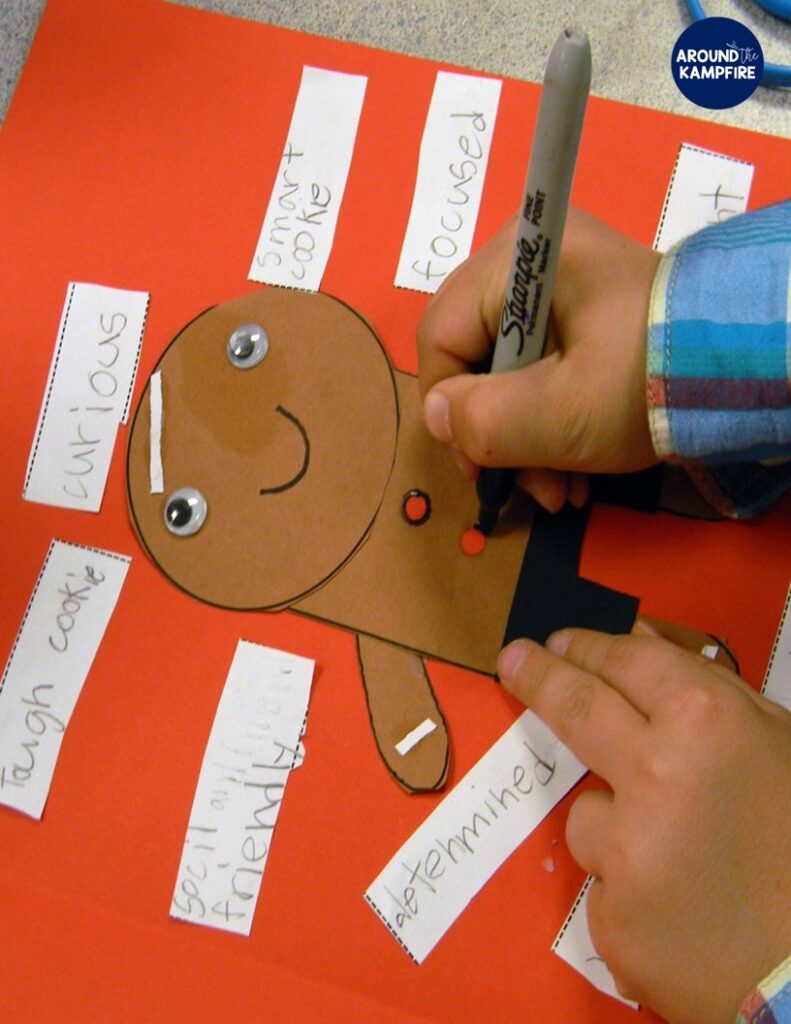
The Gingerbread Man Loose in the School is also ideal for understanding a character’s personality and traits by looking at how the character thinks, acts, and feels. I recently added a digital version.
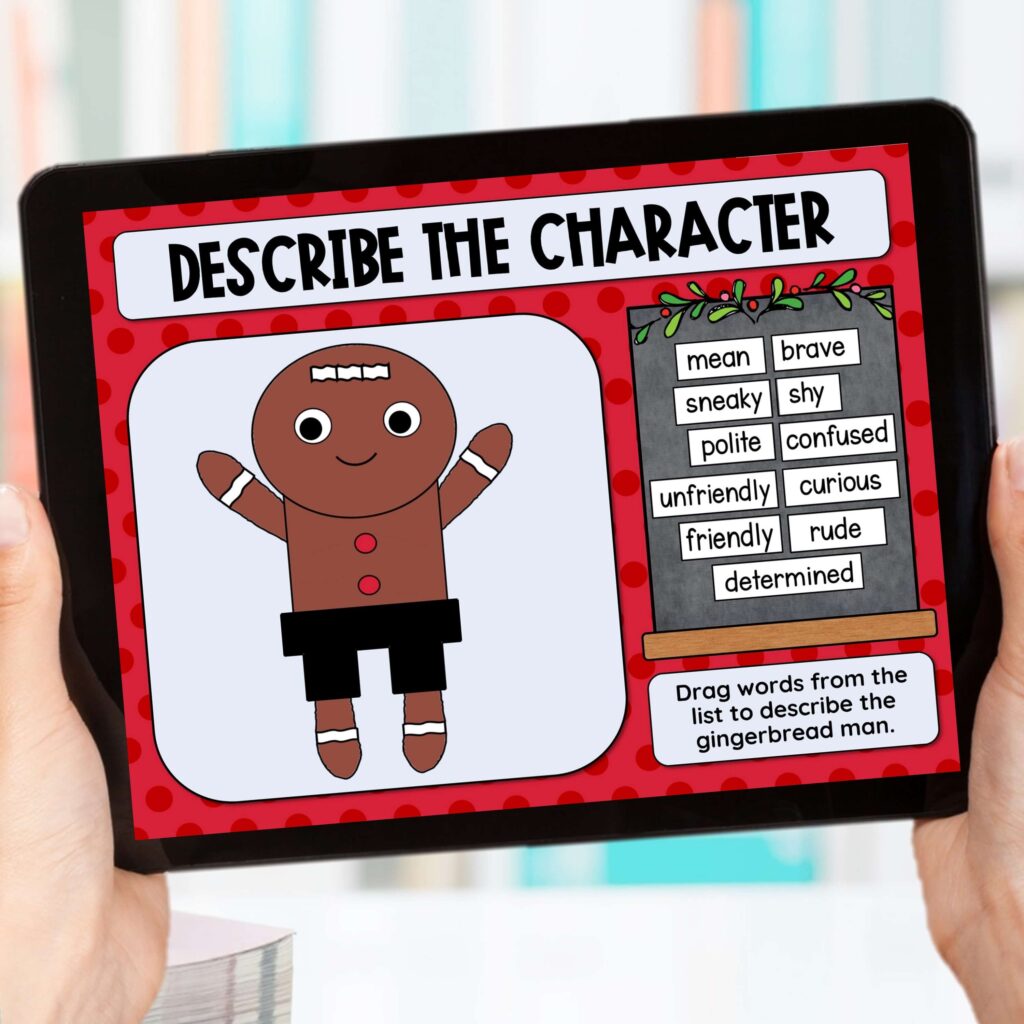
Identifying Non-Literal Language
As we compare versions of The Gingerbread Man I like to include The Gingerbread Girl for learning the difference between literal and non-literal language.

Opportunities abound with this book for lively discussion and opinions about whether the gingerbread girl is a smart cookie or a tough cookie! I like to use a lot of interactive charts that students can add their thoughts to. Using make-your-own thematic sticky notes adds to the fun! I use removable glue sticks so I can reuse the charts each year.

I think it’s important to have students keep a reading journal or engage in a written response with each close reading lesson or skill/strategy you’re working with.
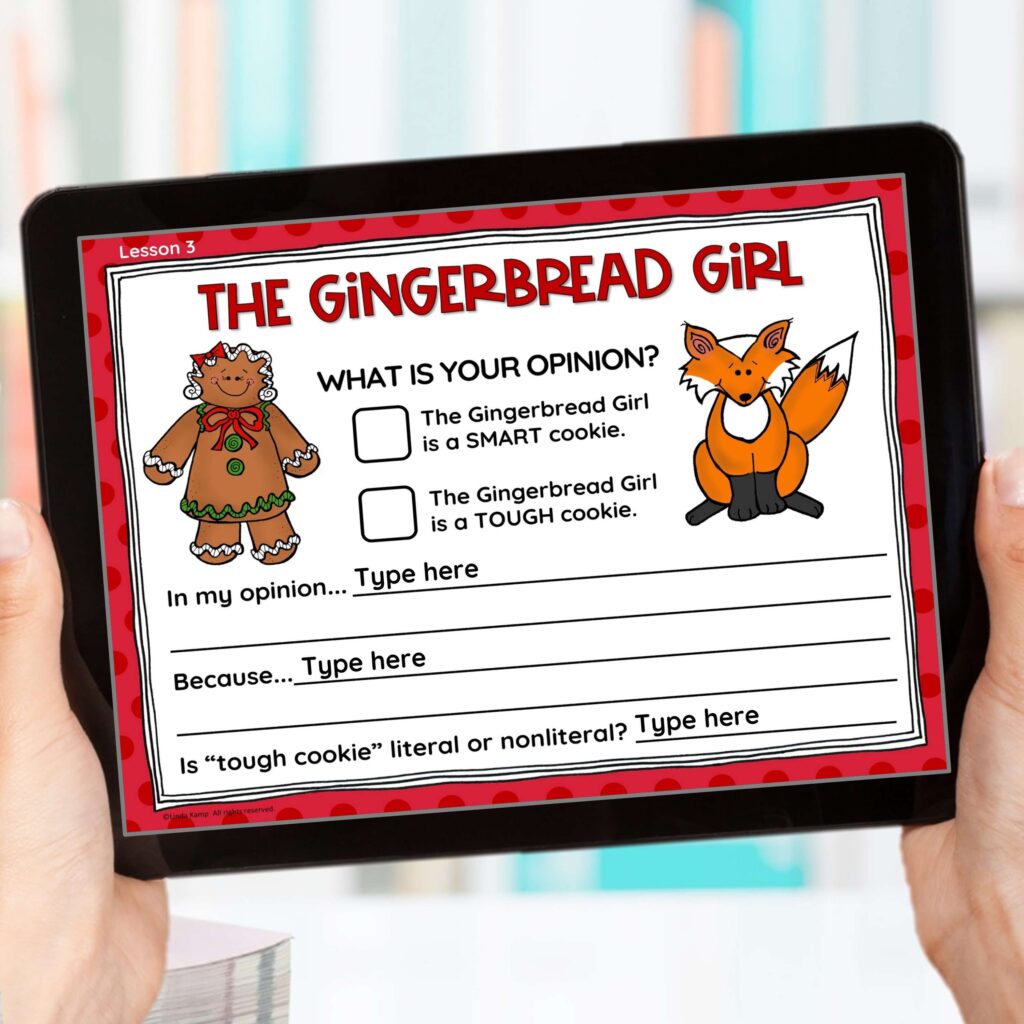
Paying Attention to How Characters Solve A Problem
The characters in these stories have big problems as they are usually running for their lives! Paying close attention to how a character responds to a challenge and solves a problem gives our readers clues to their personalities and insight about their feelings that help our readers make inferences and better understand the characters and the story.

The solutions to these challenges vary from book to book, but always a class favorite is the response by the gingerbread girl. She turns the tables on the fox, muzzles him, and teaches him some manners!
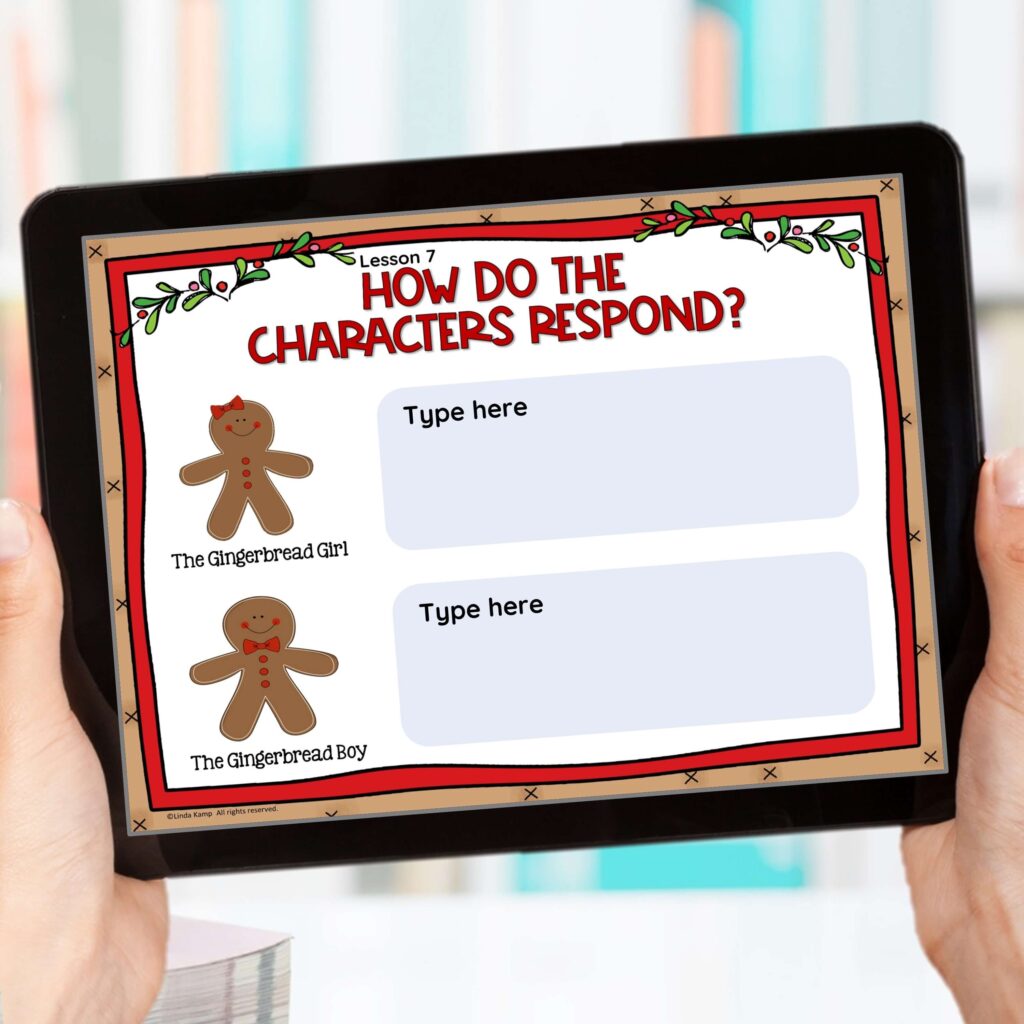
Why Do Authors Use Repetition In these Stories?
The repeated chants by all of the gingerbread characters give these stories a rhythm that children love. They act as transitions to move the stories forward. Readers also gain important information about these characters by the words and phrases they repeat.

Ask your students questions like, “Why do you think the author repeats these words?” “What do you think the author wants us to know about this character?” and “What does the gingerbread man want the other characters to do?”.
With this digital version, students drag and drop the repeated word to match the character who says them.
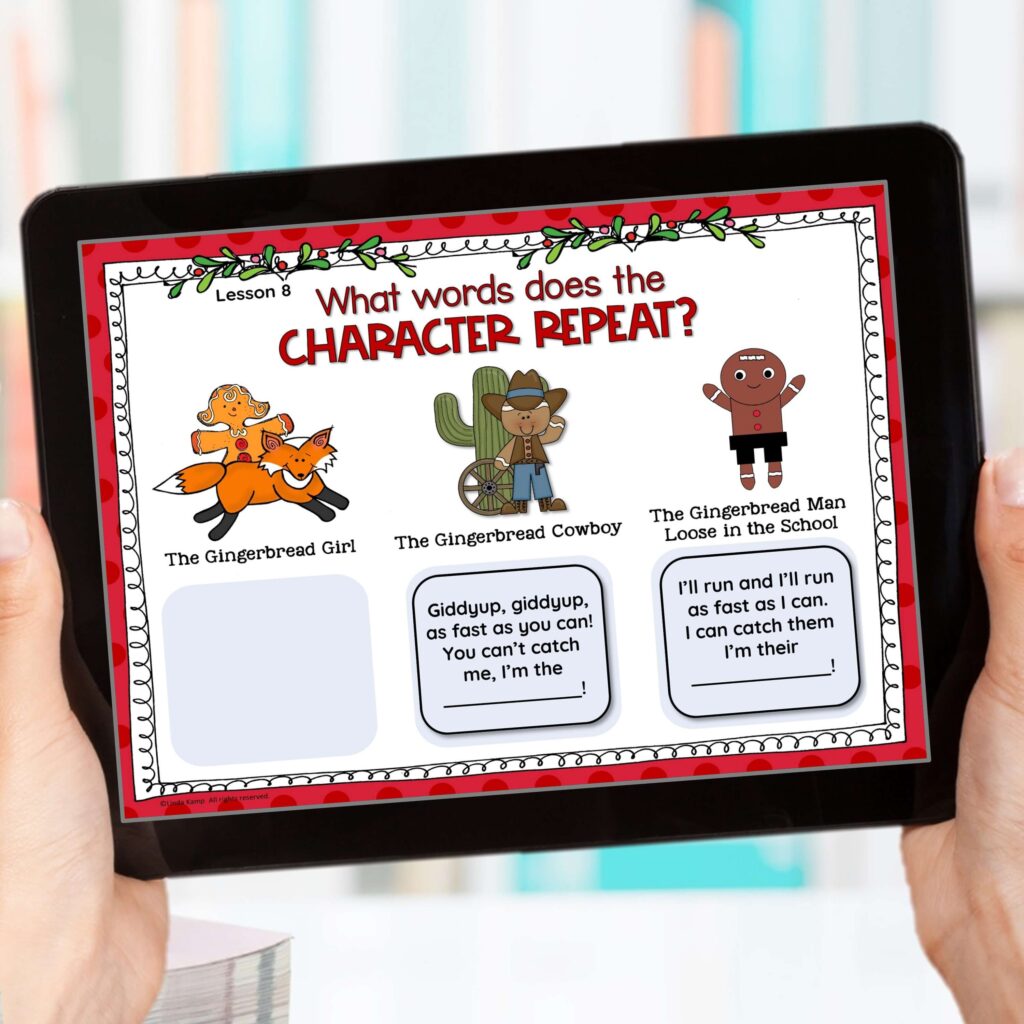
Writing A Fractured Fairy Tale
During our gingerbread man book study, students write narrative pieces by rewriting The Gingerbread Man from the fox’s point of view. These fractured fairy tales start with the question, “What if the fox were a cookie?”

We published the completed writing on cookie sheets!
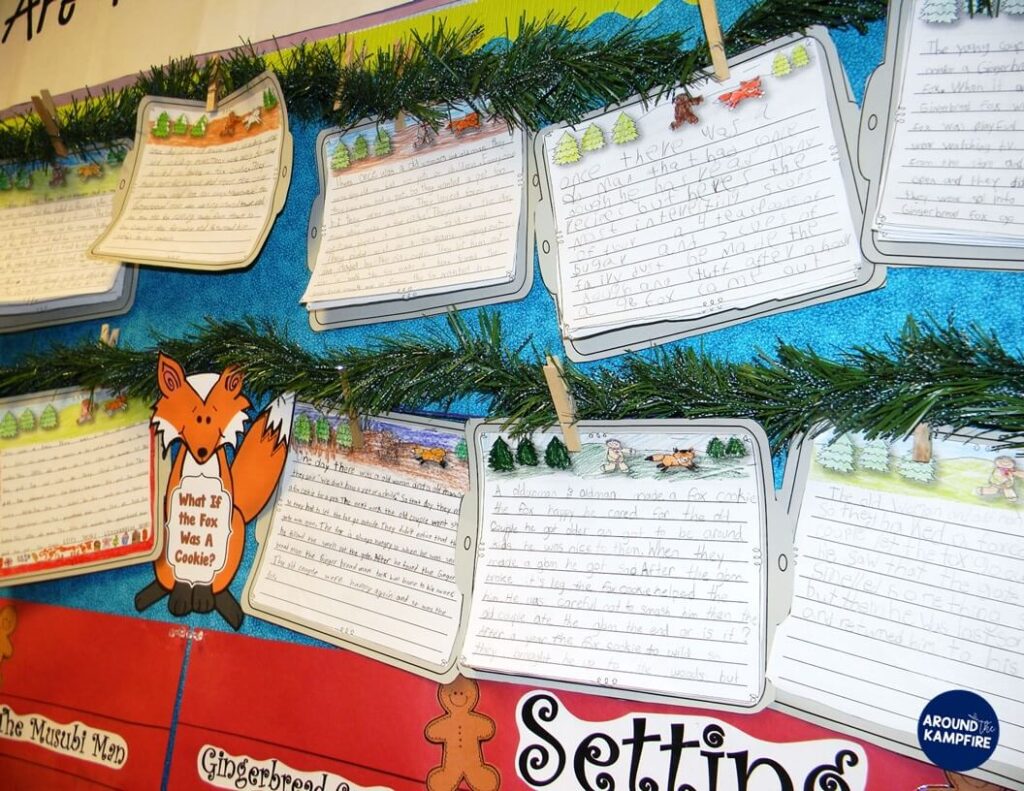
The gingerbread man is determined to escape in every version we read. So I have my students write an Escape Prevention Manual as a writing center activity during our unit.
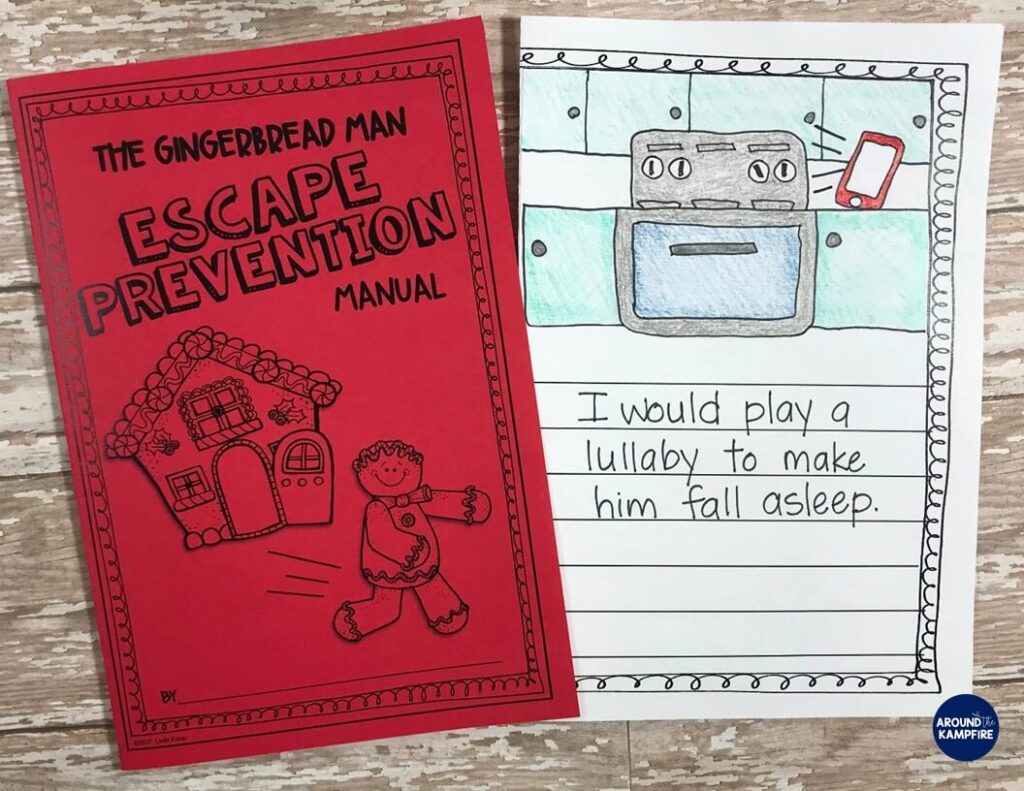
It’s a fun way for students to do some procedural writing making sure to use transitional words and phrases.
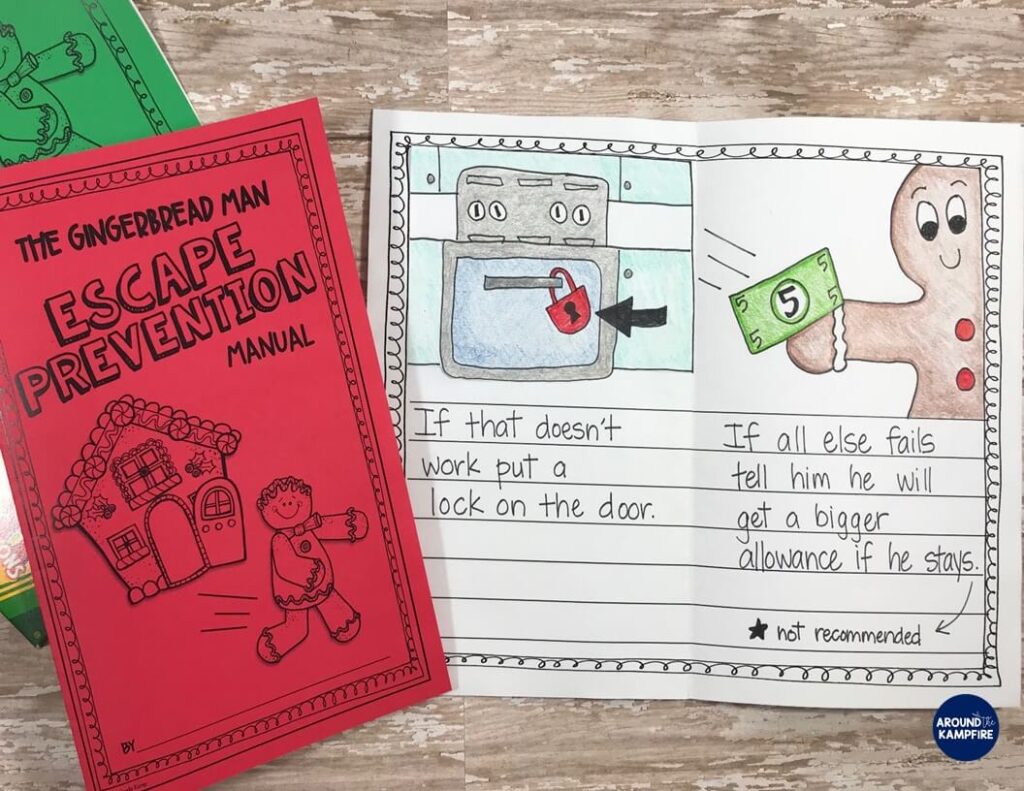
Check Comprehension
I’ve made several quick quizzes to check for understanding as we work through the unit. I recently added digital version.
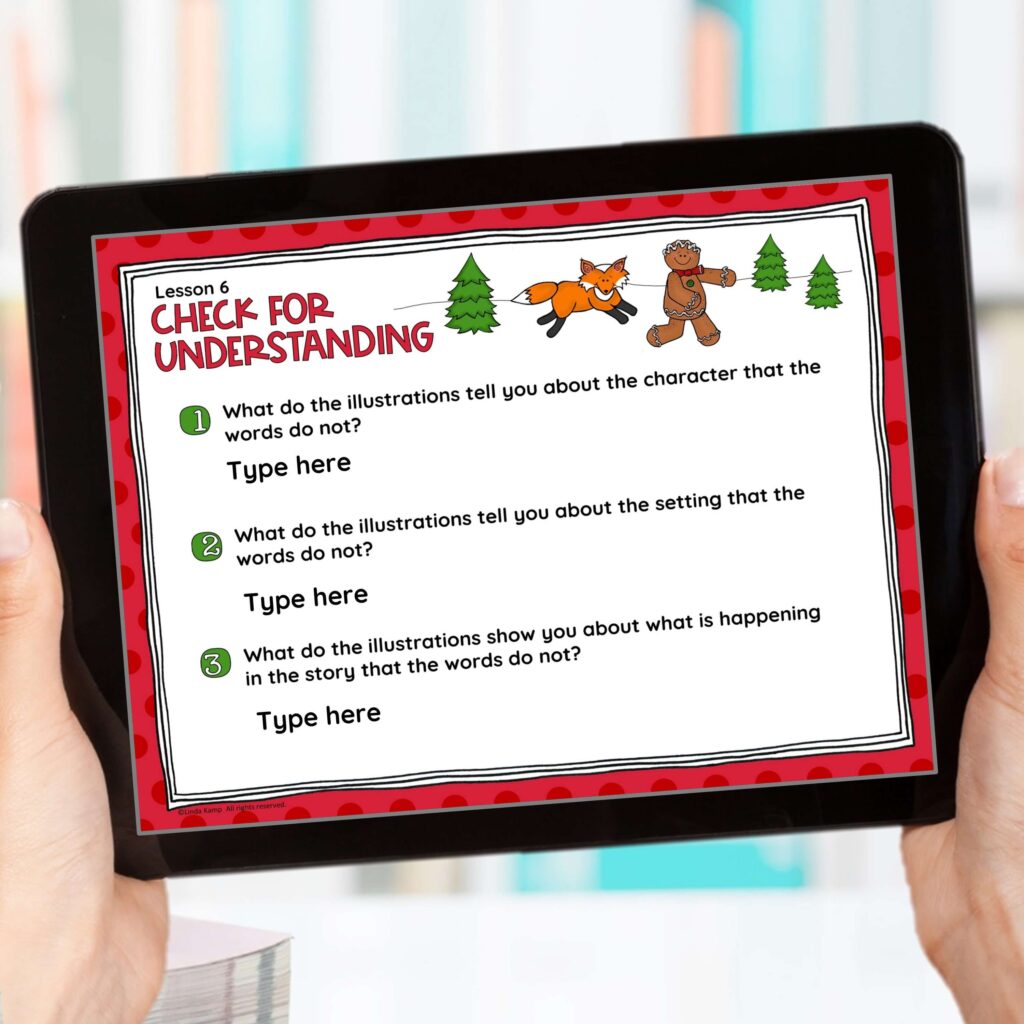
These are some of the close reading gingerbread man activities and lessons I teach while comparing versions of The Gingerbread Man. I hope you’ve found some ideas you can use in your own classroom that will help turn your readers into thinkers!
If you’d like to use these activities with your class, you can! I’ve put all of the resources together and included a 9-lesson teaching Power Point, also on google Slides, writing projects, reading activities, and print and digital literacy centers. Click for the Gingerbread Man Book Study I use with both printable activities and digital activities on Google Slides.

Favorite Versions of The Gingerbread Man-Book List
These are some of the books I’ve collected over the years and read aloud to students during our book study. I often purchase the used paperback copies. Available on Amazon, I have (affiliate) linked them to save you time. (Affiliate links add no cost to you, but help me pay the rent on this little corner of the internet.)
Click here for teaching ideas specific to each of these gingerbread books.

The following links are Amazon affiliate links. As an Amazon Associate I earn a small percentage from qualifying purchases.
The Gingerbread Man (Traditional Version)
The Gingerbread Girl Goes Animal Crackers
The Gingerbread Man Loose in the School
The Musubi Man-Hawaii’s Gingerbread Man
Check out this gingerbread math ideas post to learn some fun ways to integrate math into your gingerbread unit. See how we used the ChatterPIX app to animate our gingerbread men!
If you’ve enjoyed this post why not share it with your teacher friends? Go ahead and pin it on Pinterest of share on Facebook!

You might enjoy these related posts:
Click here to see how I take the struggle out of teaching central message using gingerbread books.
Need ideas for that last CraZy week before Christmas Break? Read this hilarious post T’was The 5 Days Before Christmas Break to see how I surprised my class with a very unique way to count down the days until break!

Find out how to save your sanity keep students engaged and still learning! Click here.

The Gingerbread Man Loose in the School Activities Click here.

Need easy parent gift ideas? Click here.

Acknowledge kindness and good behavior with these FREE Caught Coupons!
Download the free coupons here.
Happy teaching friends!





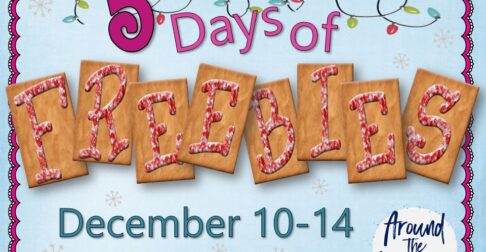
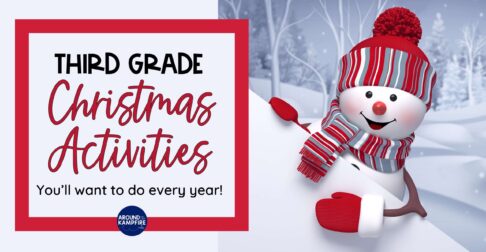
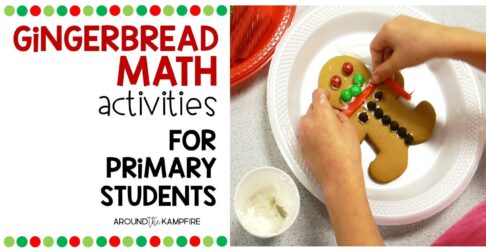

What time of year do you read these? Before or after Christmas?
What a fun way to get students thinking! Your unit is so well developed. I live just seven miles from the Mexican Border, so I added “The Runaway Tortilla” by Eric A Kimmel and Erik Brooks to the version line-up.
We love “The Runaway Tortilla” too! I hope your students enjoyed the activities!
Hi! How do we get a copy of the figurative language little posters about how authors use them? Those are awesome!
Hi Rebecca,
The posters are lesson visuals and are available in this gingerbread man reading unit HERE.
I love using picture books and didn’t realize there were so many gingerbread books out there! Thank you for sharing your great ideas❣️
Thank you! Love this unit and you’ve given me more to add. I also use Burger Boy by Alan Durant, a cautionary tale told in the format of Ginger Bread Man. I created a map on a small table top and we are studying directionals as we re-tell story.
You’re welcome, Ellen! I’m so glad you found ideas you can use! I haven’t seen Burger Boy but will definitely look for it to add to my collection.
Hi Linda,
I was delighted to see my book, THE GINGERBREAD COWBOY, being used in a classroom setting. I do a lot of work with teachers and students: providing activities, teaching about writing and the life of an author, storytelling, etc.
I’ve shared your marvelous lesson on my Facebook Page and provided my followers with a link back to you.
Best wishes,
Hello Janet!
I am so tickled and honored to hear from you! I absolutely adore your book and use it every year as we compare favorite versions of The Gingerbread Man in second grade. Living in Arizona, my students easily connect to the character and story elements. It is a big hit every year!
Thank you so much for sharing the lesson, it is so kind of you to do that. I’d also like to give you a big THANK YOU and a virtual hug for all you do for teachers and our students.
Warmest regards,
Linda